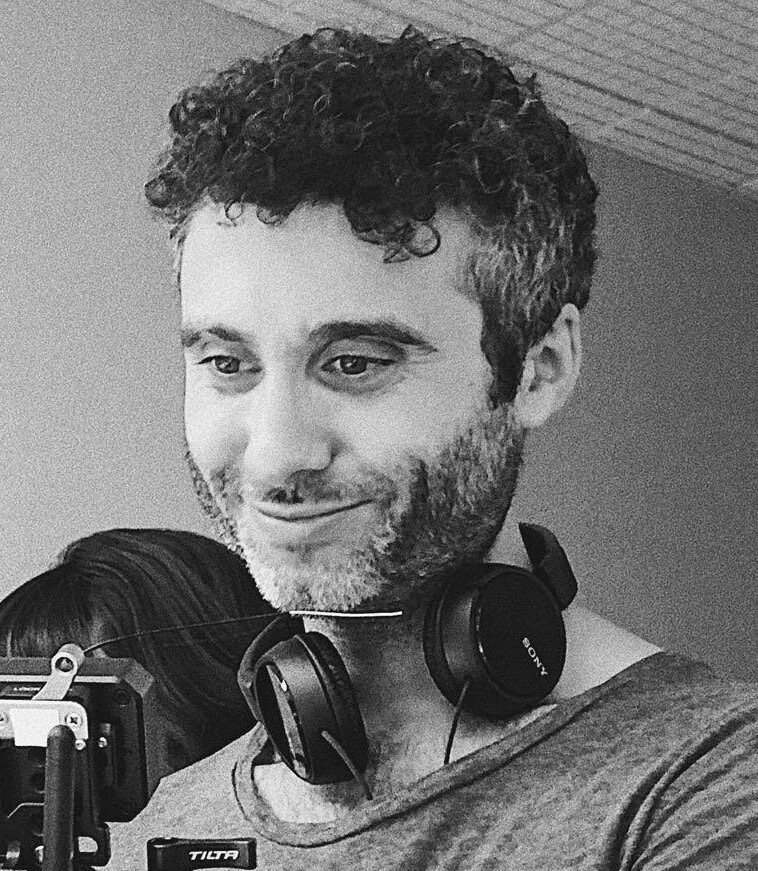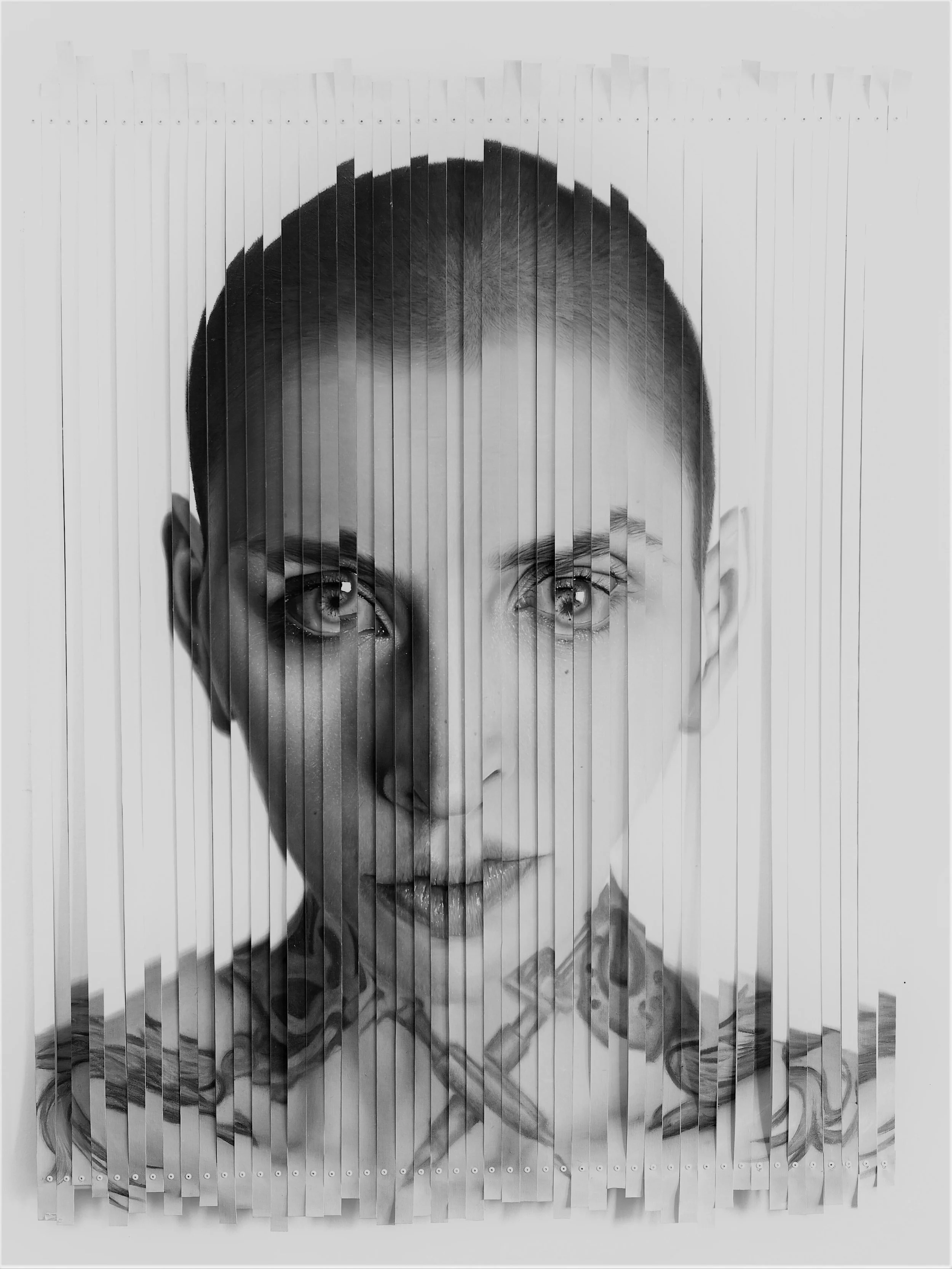AMANDINE URRUTY
French artist Amandine Urruty creates intricately staged and delightfully surreal works in charcoal and graphite. In this interview, she talks about how juxtaposing random objects creates visual uncanniness, the contemporary mythology of pop culture characters, and the sudden shift of her recent solo show from a physical gallery space to online only.
Interview by Tyler Nesler
Much of your work reminds me of artists such as Ed Gorey, Hieronymus Bosch, and M.C. Escher — very precisely rendered images which are often whimsical and grotesque. Were these artists big influences on you when you first began developing your style? Any other artists who were especially important early inspirations for you?
To be honest, I don’t know much about Gorey’s work, I like Escher, but between these three Hieronymus Bosch is the main reference for me, of course. I grew up in a little rural town, my parents were not interested in art — we only had a Salvador Dali poster in the bathroom, but my passion for the visual arts has always been in evidence. So I had to find a way to learn more about it, and my only tool at that time was my hometown’s small library. That’s were I discovered Magritte, Bosch, and a french comic artist called Edika who was my very first master. Big noses, ridiculously big boobs, grotesque characters and overfilled pictures. I guess it all began like that. I unscrupulously copied him over something like two years, when I was twelve. I wanted to become a comic artist.
At sixteen years old, my dream finally came true, and I had the chance to leave my hometown for a bigger city and start studying art at the university. I felt like a backpacker in a brand new universe. David, Ingres, Francis Bacon, Pierre & Gilles, Joel Peter Witkin, Cindy Sherman…I fell in love with so many artists, thrilling times. At that time I use to do photography, quirky self-portraits with big sausages. I came back to Flemish painting later, Brueghel, Patinir, Memling. I love Renaissance art as much as contemporary art, I have a voracious appetite.
“Never Again” - graphite and charcoal on paper, 100 x 150 cm, 2019
Many pop culture characters make appearances in your work: the Ghostbusters Slimer and Stay Puft the Marshmallow Man, Gizmo, Mickey Mouse, Bert from Sesame Street, and more. How do you typically place these characters in your works in ways which enhance the surrealism or irony? Which character is a particular favorite of yours to draw?
These characters became part of our contemporary mythology. I grew up with them, and they never left me. As a child I used to love cute dolls and toys, but at the same time I was mad about Garbage Pail Kids and Tales From the Crypt, especially the Crypt Keeper. They are our modern Minotaurs, Harpies, our Sphinxes, part of a mental labyrinth where every character has a very special role to play. I love all of them, but I particularly love to draw Slimer. Horror movies were a religious thing in my family, as my father was a unconditional fan of B movies. It became a part of his heritage.
A lot of objects which may be considered cute (such as toys or dolls) appear in much more uncanny ways in your work. What techniques do you like to use to turn an object or character from something some may consider cute into something a little more sinister or unsettling?
I don’t especially use “techniques” as my pictures are constructed freely, like exquisite cadavers with a thematic guideline. But I guess this unsettling feeling can be the result of random combinations, like Lautréamont said, “as beautiful as the chance encounter of a sewing machine and an umbrella on an operating table.” Odd meetings, mixtures of genres, a “linking of two realities that by all appearances have nothing to link them, in a setting that by all appearances does not fit them” (Max Ernst). To me, that’s how we can make the bizarre bloom.
“Gluttony” - graphite and charcoal on paper, 61 x 91 cm, 2018
“The Ball” - graphite and charcoal on paper, 70 x 100 cm, 2018
Some of your early work used a lot of color. However, in recent years you have transitioned to mostly monochrome, with occasional small uses of color. Why do you think you moved from such use of color to a monochromatic palette? How do you think black and white best serves your themes or style?
My very first works were black and white, but they were slightly different from the recent ones, more rough, less precise, made with pens and not pencils, with little lines and less gradations. At that time I used to swear I would never ever use color. I changed my mind only one year later, and began producing very colorful pictures with fluorescent pencils. At that time, I thought these loud colors and rainbows were part of a “magical thinking” plan. It was a childish way to cope with a new (and so sad) period I had to face. I really immersed myself in candy pink and neon yellow for two years, producing enough drawings to publish a 128 page book called Robinet d’Amour. When my dad finally died, I decided to go back to black and white. Definitely. It could seem a bit emo, but who cares.
Today, I don’t think I’ll use color any more, not for the moment at least. Only on final touches, with a few rainbows. Sometimes. But I love graphite too much. It has endless possibilities, and it helped me to get away from cuteness and naivety and to try to find a new way of working. My main goal today is to try to master it. Explore it, as much as I can.
“Rainbow” - graphite and color pencils on paper, 61 x 91 cm, 2015
You've said that the title of your recent solo show at the Dorothy Circus Gallery in London, Made in the Dark, is partially a reference to the Hot Chip album of the same title. What is it about Hot Chip's music that has kept you listening to them over the years? Do you think their music has informed your work in any unique way?
To me, Hot Chip’s music is deeply linked to a special and sad period. Disease, death, disillusioned love, broken heart. It was my little amount of fun, and I was so glad to share it with my friends. Made In The Dark was a reference to their third album, but also — and mainly — to my daily routine at that time. Working day and night, with artificial light. Living in the dark. I don’t think their music informed my work in any way, it accompanied me — and helped me — a bit, that’s all.
Made in the Dark was turned into a virtual show by Dorothy Circus in response to the current coronavirus pandemic. What was it like for you to suddenly have a show go totally virtual like this? Has the current crisis influenced the way that you work or even your subject matter?
To be honest, it was a great disappointment. A solo show is always an important moment, and this time it necessarily had to appear like a dud. So many hours of work, and so little feedback. It was a cruel decision to swallow, but it was inevitable. I had many other shows and projects cancelled, delayed, swept under the rug. 2020 already looks like a ghost year. But we’re all in the same boat! I deeply hope that this crisis will end as soon as possible, just like everybody. Now I feel like like a dog waiting behind the door. But still I’m trying to get back on my feet and to get back to work. I have real difficulties finding a way to buy paper and pencils. So I work on sketches, and work on different projects, like objects, future murals. But I can’t work directly on this subject. Too scary, too destabilizing. The future has suddenly disappeared for all of us, how can we cope with that? I just feel overwhelmed.
And it’s funny to see that many of my artist friends, writers, painters, musicians are in the same mood. “As an artist, lockdown is your daily routine! You must be working so hard!” Actually, no. The first weeks left me so empty, my world had just vanished, I had nothing left to eat. Today, like a resilient prisoner, I’m back in the ring. Or at least I hope so.
Made in the Dark - Amandine Urruty solo show, Dorothy Circus Gallery London, 2020
The aesthetics of old cabinets of curiosities (wunderkammers) inspire the layout and contents of your images. Do you collect "curiosity" objects yourself? Or what types of things would you like to assemble into your own cabinet if you had the time and the space?
I grew up in a house filled with knickknacks. My mother had all kinds of collections. Teapots, eggcups, frogs, ducks, cows, horses, even packaged sugars. An overfilled house. I guess my passion for wunderkammers came from that, but I never wanted to reproduce it. On the contrary, I’d love to live in a big, empty, and white space. So I collect a few masks, considered as tools, and pencils of course, but I leave trinkets where they are. But I do gather pictures! Not on my walls, of course. Too oppressive. But printed and dematerialized pictures, that's a good compromise for me.
“Wonders” - graphite and charcoal on paper, 100 x 70 cm, 2019
“Luxuria” - graphite and charcoal on paper, 61 x 91 cm, 2018
You've published books of your work, such as The Party from 2018. Are there any new publications in development? Is there anything else coming up that you would also like people to know about?
I’m currently working on two books, the first one should be released in November and will be a small monograph with a brilliant text by a brilliant french essayist. The second one is a heavier and still secret project, for late 2021, if everything's okay. There will also be a special object release in the upcoming months, and I’m thinking about creating a new print, the first since three years. Then, I hope there will be new shows soon, fingers crossed!
View more of Amandine’s work on her site and Instagram.
You might also like our interviews with these artists:
Tyler Nesler is a New York City-based freelance writer and the Founder and Managing Editor of INTERLOCUTOR Magazine.













